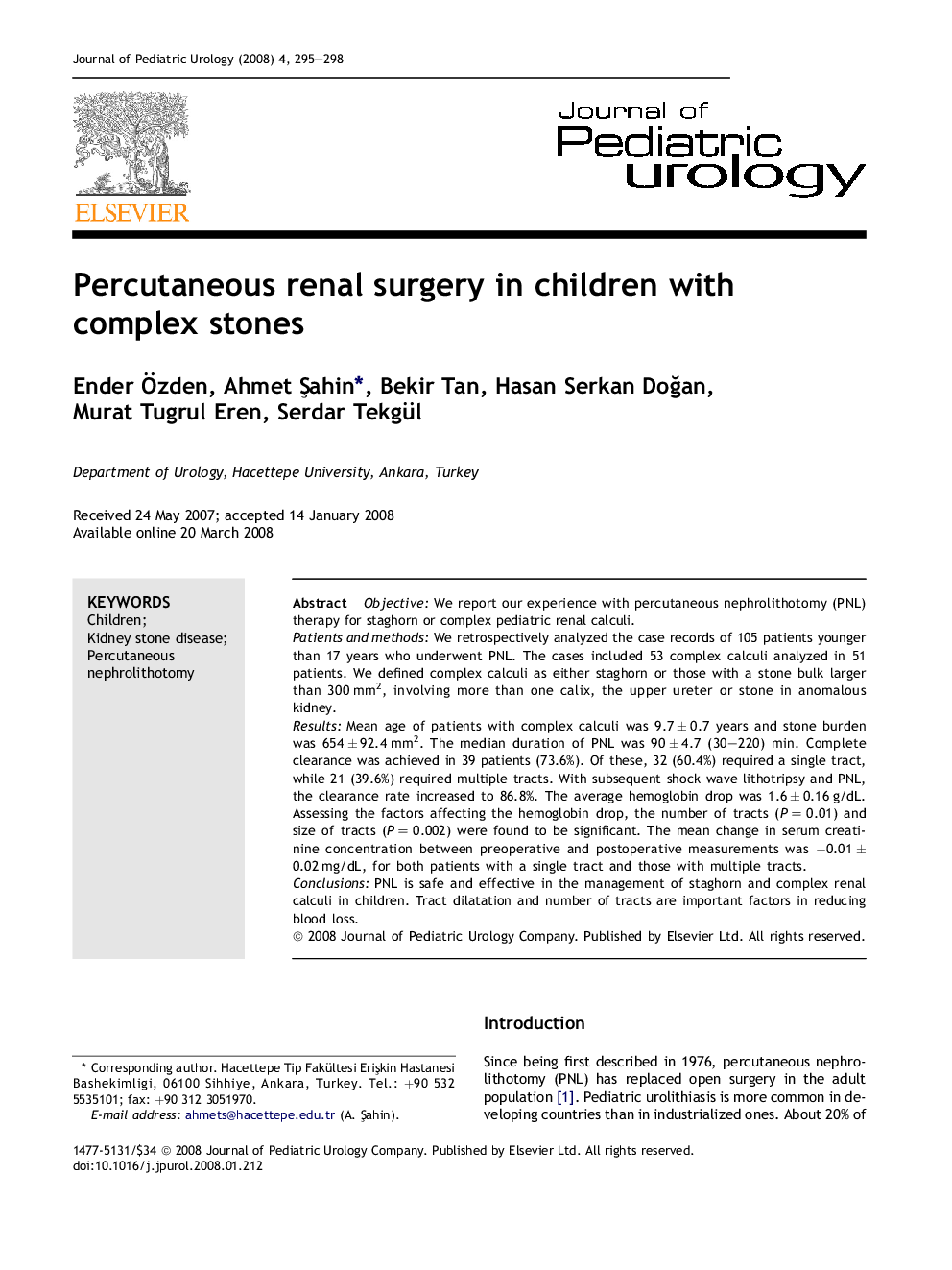| Article ID | Journal | Published Year | Pages | File Type |
|---|---|---|---|---|
| 4163408 | Journal of Pediatric Urology | 2008 | 4 Pages |
ObjectiveWe report our experience with percutaneous nephrolithotomy (PNL) therapy for staghorn or complex pediatric renal calculi.Patients and methodsWe retrospectively analyzed the case records of 105 patients younger than 17 years who underwent PNL. The cases included 53 complex calculi analyzed in 51 patients. We defined complex calculi as either staghorn or those with a stone bulk larger than 300 mm2, involving more than one calix, the upper ureter or stone in anomalous kidney.ResultsMean age of patients with complex calculi was 9.7 ± 0.7 years and stone burden was 654 ± 92.4 mm2. The median duration of PNL was 90 ± 4.7 (30–220) min. Complete clearance was achieved in 39 patients (73.6%). Of these, 32 (60.4%) required a single tract, while 21 (39.6%) required multiple tracts. With subsequent shock wave lithotripsy and PNL, the clearance rate increased to 86.8%. The average hemoglobin drop was 1.6 ± 0.16 g/dL. Assessing the factors affecting the hemoglobin drop, the number of tracts (P = 0.01) and size of tracts (P = 0.002) were found to be significant. The mean change in serum creatinine concentration between preoperative and postoperative measurements was −0.01 ± 0.02 mg/dL, for both patients with a single tract and those with multiple tracts.ConclusionsPNL is safe and effective in the management of staghorn and complex renal calculi in children. Tract dilatation and number of tracts are important factors in reducing blood loss.
